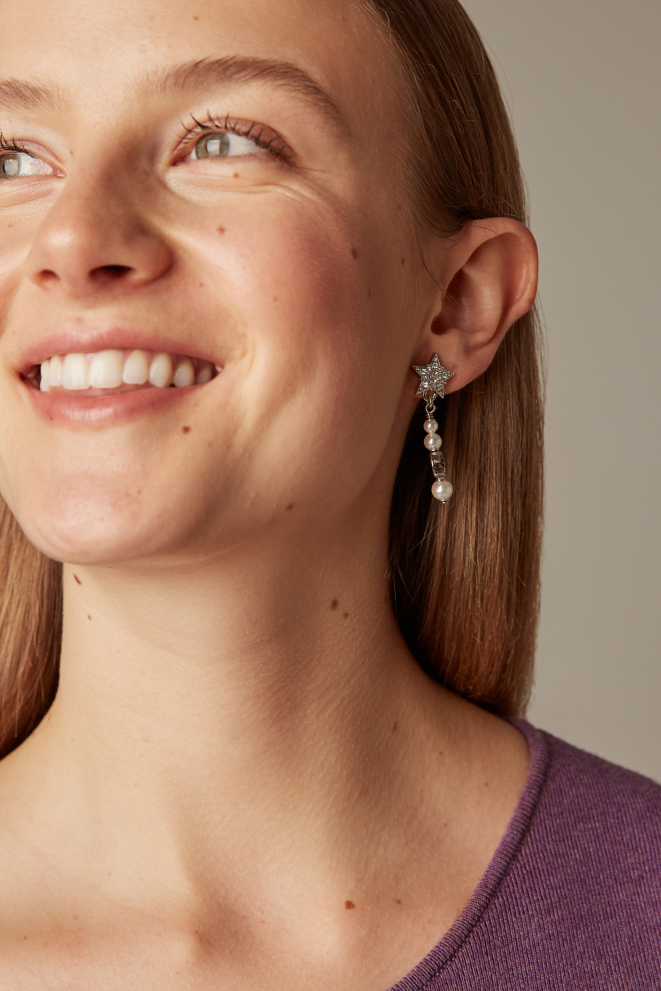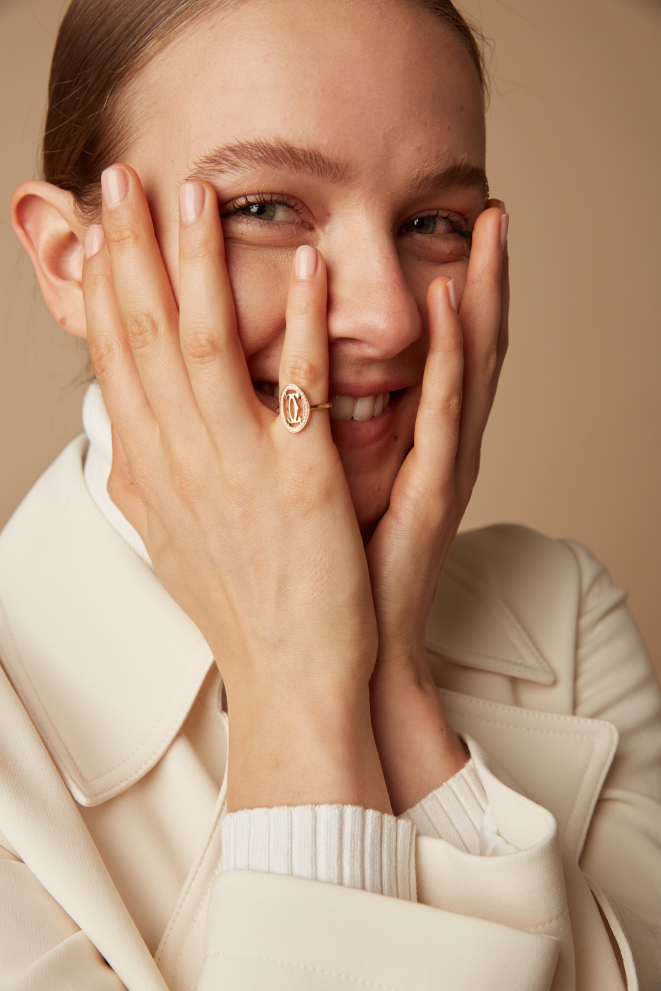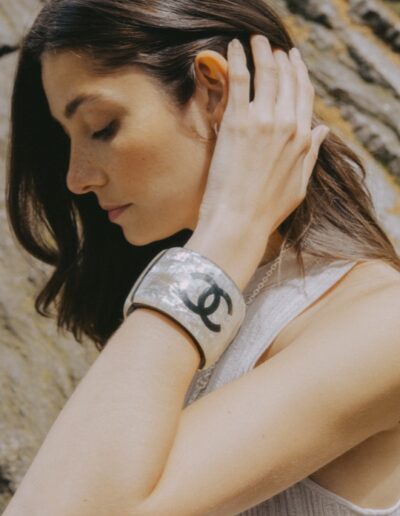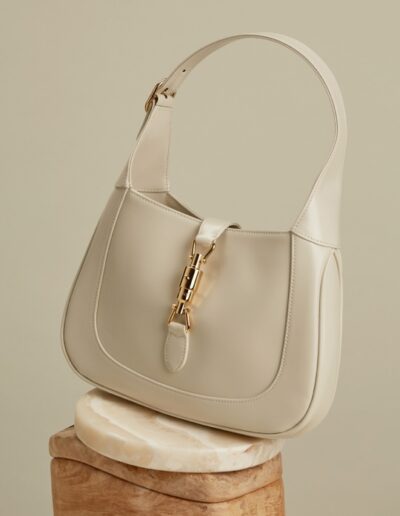BASICS & CARE
Jewelry 101: Terms Every Jewelry
Lover Needs to Know
By Karen S, Mar 26, 2021

The world of jewelry is so vast and wide, of course Rebag needed
to put together a terminology guide on the all-important phrases that every jewelry collector – novel or experienced – must know. Keep on reading for the most common terms you’re likely to encounter.
Bail: The ring or link that connects a pendant to a necklace.
Ceramic: Fired clay turns into ceramic. We see ceramic in rings, pendants, and watch bands.
Certificate of Authenticity: A document from the jewelry brand stating the serial number and jewelry details.
Clasp: The mechanism that allows a necklace or bracelet to easily be put on and taken off without causing any damage.
Collateral: Items, such as a signed box or certificate of authenticity, that may accompany jewelry and may add value to the item.
Coral: The limestone secretion of marine invertebrates used as an ornamental material in jewelry, carvings, and sculptures.
Designer Signature: The jewelry house’s signature or logo engraved on their jewelry on the underside of the piece or the inside of a ring.
Eagle’s Head: A French hallmark that was/is struck in gold jewelry or jewelry containing gold parts. It is used since 1838 with minor variations in its design.
Earring Back: This connects to the post to keep the earrings in place.
Earring Post: A thin rod that goes through the earlobe so that the mounting can fit snuggly against the ear.
Enamel: A decorative coating applied to metal in a powder form that when heated turns into glass.
Fashion Jewelry: Jewelry made from non-precious metals and faux stones.
Fine Jewelry: Jewelry made up of precious metals and genuine gemstones.


French Dog’s Head: A hallmark depicted here is a French hallmark that was/is struck in platinum jewelry or jewelry containing platinum parts. It is used since 1912.
GIA Lab Report: A diamond report from the Gemological Institute of America providing a scientific blueprint of the diamond’s properties and characteristics, it also attests to the diamond’s authenticity.
Glass: is made from natural and abundant raw materials (sand, soda ash, and limestone) that are melted at very high temperatures to form a new material: glass. It is often used in fashion jewelry.
14K White Gold: is produced from 58.3% pure gold and a 41.7% mixture of other metals like palladium, nickel, and zinc.
14K Yellow Gold: is produced from 58.3% pure gold and a 41.7% mixture of other metals like copper, zinc, silver, and nickel.
18K Rose Gold: is produced from 75% pure gold and a 25% mixture of other metals like palladium, nickel, and zinc.
18K TriColor Gold: is produced of 75% pure gold and 25% alloy mixture in three colors of gold.
18K White Gold: is produced from 75% pure gold and a 25% mixture of other metals like palladium, nickel, and zinc.
18K Yellow Gold: is produced from 75% pure gold and a 25% mixture of other metals like copper, zinc, silver, and nickel.
Gripoix: Refers to glass cabochons in fashion jewelry.
Hallmarks: Small impressions, struck in jewelry by official assay offices which serve as a type of consumer protection. Only marks struck by official, government-controlled assay offices are to be named hallmarks.
Makers Mark: The initials or name of the manufacturing firm or other representative symbol stamped into a gold, silver, or platinum item.
Mother-of-Pearl: The term used for the iridescent substance that forms the inner layer of the shell of some mollusks. It is made of nacre which is a combination of aragonite and conchiolin.
Non-Gem Materials: Material used in jewelry that is not considered a gem.
On Link Near Clasp: Where there are often hallmarks or makers marks near the clasp.
Paste: Heavy, very transparent flint glass that simulates the fire and brilliance of gemstones because it has relatively high indices of refraction and strong dispersion.
Pin Stem: The long, pointed part of a pin.
Platinum 950: 95% platinum and 5% alloy metals (usually ruthenium, copper, cobalt, iridium, rhodium, or palladium.
PVD: Short for physical vapor deposition, which is a vacuum coating process that will produce a beautiful decorative and a very functional finish on the item being coated. PVD utilizes a titanium nitride that provides an extremely durable and tough wearing coating. PVD coatings possess a far higher resistance to wear than traditional gold plating.
Registered Trademark: These are marks on the jewelry that help protect the names, logos, or initials of jewelry manufacturers, importers, wholesalers, or retailers. They’re registered with the United States Patent Office (USPTO), or a similar organization in another country.
Serves Porcelain: Ceramic used in Van Cleef & Arpels jewelry.
Shank: The lower portion of a ring.
Signature Locations: The placement of the designer’s signature or logo on the jewelry.
Stainless Steel: Contains at least 10% chromium and, depending on the grade of the stainless steel, it may include smaller percentages of nickel, molybdenum, titanium, niobium, and other metals. Depending on the alloys, stainless steel is extremely resistant to corrosion.
Sterling Silver 925: An alloy of silver containing 92.5% pure silver and 7.5% of other metals
Tag: A plaque or tag, located hear the clasp and it usually has a signature, serial number and/or gold stamp.



